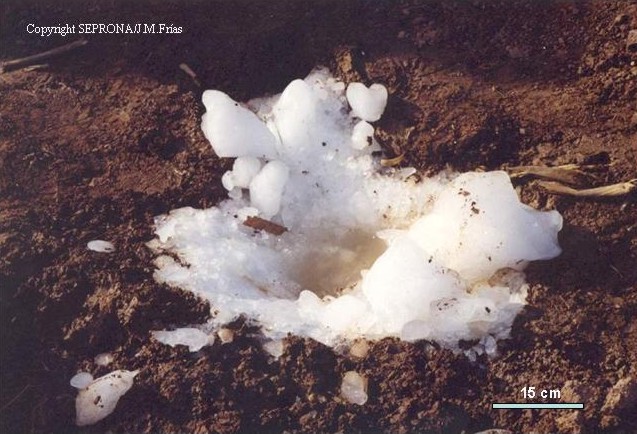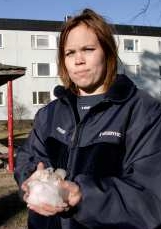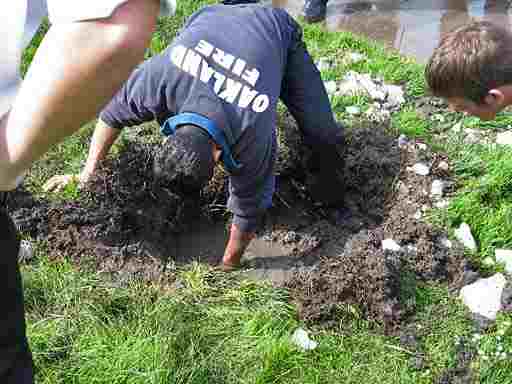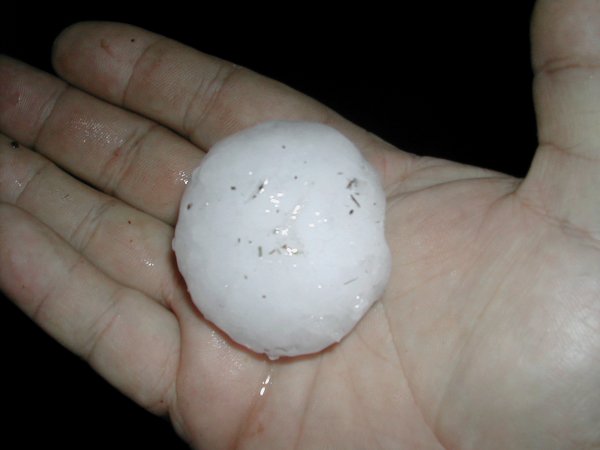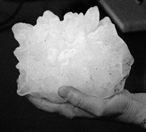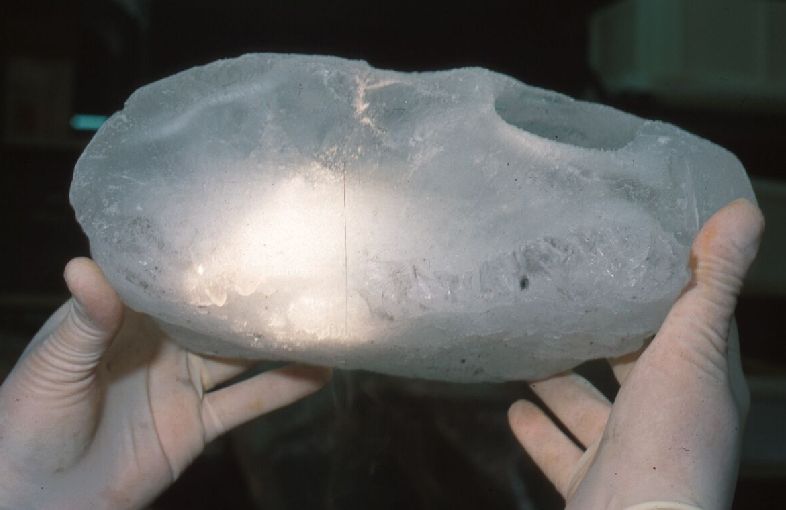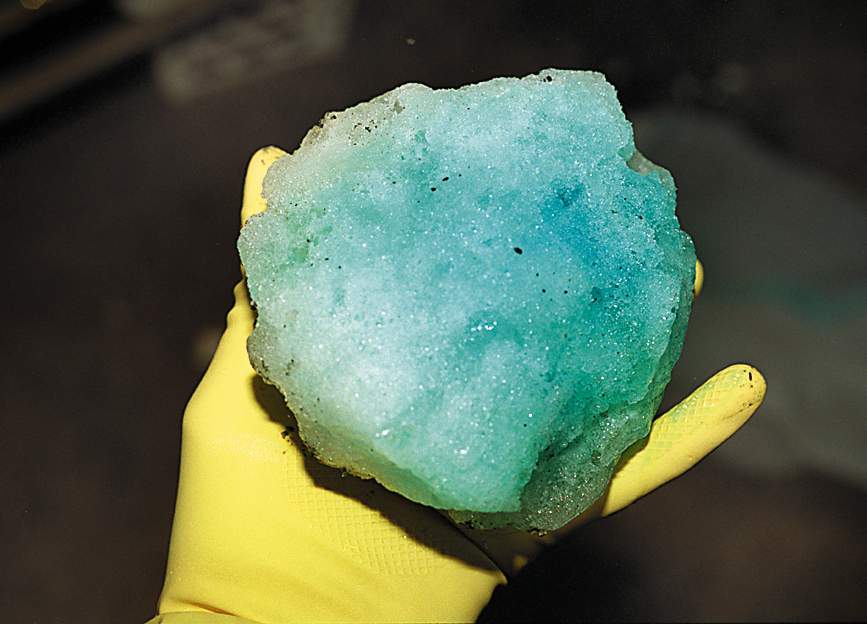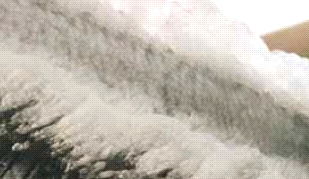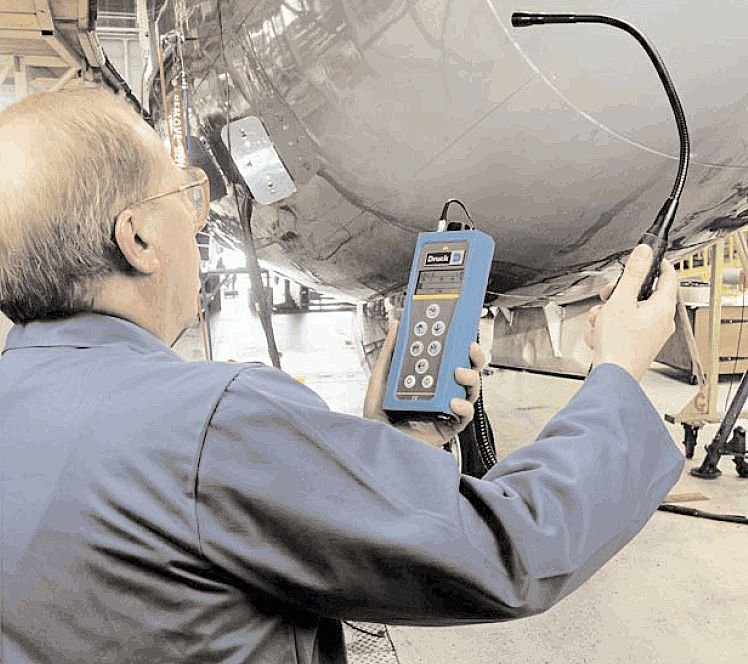![]()
Various large chunks of ice (around 50 kg) dropped from the sky in the village of Badli, Lohat, Haryana, India. 16 March 2011. Possible megacryometeor. Hydrochemical and isotopic analyses are needed to confirm its atmospheric origin.
![]() Join us in
facebook ! Open group
(and Community) on Megacryometeors
Join us in
facebook ! Open group
(and Community) on Megacryometeors
Megacryometeors. Ten years of research
Atmospheric megacryometeors could be a new type of fingerprint (geoindicator) of Climate Change. This was already proposed by our research team in January 2000 (Martinez-Frias et al. 2000). Tropospheric Global Warming (and mainly Stratosperic Cooling ) might be making the tropopause colder, moister and more turbulent, creating conditions in which ice crystals could grow, forming, unusually and much more recurrently, large ice conglomerations.
The research of the historical record of ice falls brings together many cases that are apparently similar. Practically all clear-sky ice falls were not appropriately researched because they were routinely assigned, without verification, to aircraft icing processes, to wastewater from aircraft lavatories (blue ice), or to the leakage of aircraft water tanks. A simplistic analysis of these events as a whole can lead to misunderstanding because different types of ice falls correspond to different formation scenarios in the earth’s atmosphere, either natural in the strict sense of the term, or with direct or indirect relation with human activities. Consequently, it is necessary to define differentiation criteria (e.g., texture, and structural and compositional characteristics of the ice) to distinguish among them.
Megacryometeors are not the classical big hailstones, ice from aircrafts (waste water or tank leakage), nor the simple result of icing processes at high altitudes. A detailed historical review of such ice fall events confirms that there are many documented references of falls of large blocks of ice which go back to the first half of the 19th century (previous to the invention of the aircrafts) , it also reveals that, mainly after 1950, the number of megacryometeor hits has spectacularly increased. More than 100 events have been witnessed and recorded, affecting practically the whole planet (Argentina, Australia, Austria, Canada, Colombia, India, Italy, Japan, Mexico, New Zealand, Portugal, South Africa, Spain, Sweden, The Netherlands, United Kingdom and USA). Climate change can be manifest in different ways giving rise to different types of impacts. We suggest one monitor these megacryometeor events because they can not only be a potential natural hazard for people, aviation, etc, but perhaps they are also signals of more serious environmental problems.
Since January 2000, our research team is the only one that: a) has studied these events and analyzed the ice by using different techniques (stable isotopes, ICP-MS, DSC, Raman spectroscopy, GC-MS, etc), coining a new term (megacryometeor); b) has published the experimental results and hypothesis in scientific peer-review journals, and c) has proposed a scientific explanation for their atmospheric origin and formation in the Earth atmosphere (the ice is unequivocally tropospheric). It is important to note that ice is recognized as a mineral by the International Mineralogical Association, IMA. Considering this apprach, studying the texture and physical properties of the ice crystals, as well as their hydrochemical and isotopic features (as in a quartz, calcite, halite, etc), unequivocally allows us to identify its origin (from lakes, oceans, aircrafts, atmosphere, comets, etc).
Nevertheless, much work is still needed as no geophysical model is able to satisfactorily explain what factors cause the ice nucleation and growth, or how these unusually large ice blocks can be actually formed and maintained in the atmosphere. Only by use of an interdisciplinary approach, including atmospheric and climatic studies, simulation, and analysis of physicochemical experiments of the ice will it be possible to learn the real cause of megacryometeors and the reasons for the apparent multiplication of these objects.
Some selected pictures from different countries
|
|
|
|
|
|
|
|
|
Different types of ice from the sky
|
Hail |
Hailstone |
|
Megacryometeor |
Blue ice |
|
Aircraft icing |
Water tank leak |
Countries - Ice fall Events (2010-2000)
2011
USA (2), UK, India
|
2010 |
2009 |
2008 |
|
Czech Republic, Bosnia-Herzegovina, Pakistan, Spain (2), USA (3), UK (3), Germany, China |
Canada, UK, USA (3), Chile, Brazil |
USA (4), UK (1) |
|
2007 |
2006 |
2005 |
|
USA (9), The Netherlands (2), Spain (1), UK (1), Argentina (1) |
India,USA (7), UK, South Africa |
Japan (2), Netherlands, UK (2), USA (6), Spain (3) |
|
2004 |
2003 |
2002 |
|
Netherlands, UK (2), Sweden, USA (4), New Zealand, Spain |
The Netherlands (2), Canada (1), USA (4), Italy (1) |
Portugal, UK, Mexico, Netherlands, Spain (3), USA |
|
2001 |
2000 |
Contact |
|
Spain, Australia |
Canada, Austria, Netherlands, UK, Italy, Spain, Colombia, Argentina |
